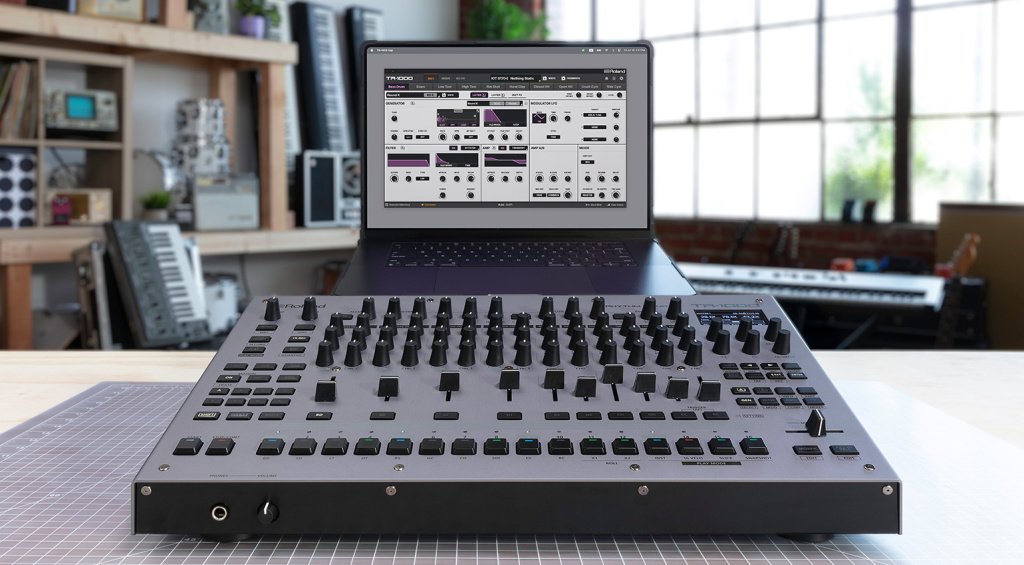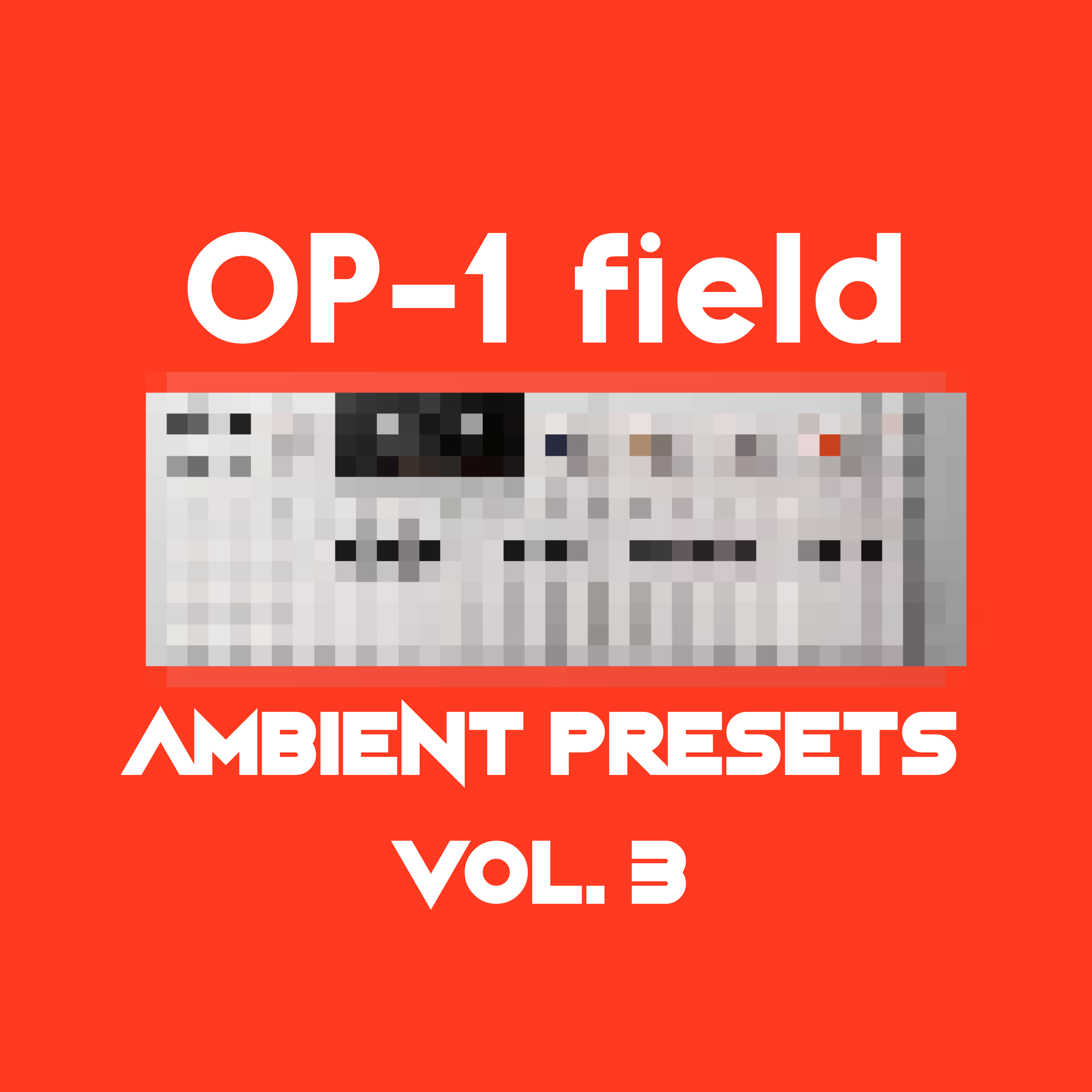Roland TR-1000 Drum Machine
Back to analog.
The brand new Roland TR-1000 Rhythm Creator is finally here! Many years after the release of the TR-8S, the new flagship Roland Drum Machine is out, and it looks really good! At first glance, the TR-1000 is everything any Roland or Drum Machine fan ever wanted. Analog drums, ACB (Analog Circuit Behavior) sounds, Samples, Analog & Digital Effects, Layering, great I/O, and many more are all implemented into this - definition of flagship - instrument. It’s definitely more than enough - but is it a bit of an overkill?
Standout Features
It would take a long time to list every feature the TR-1000 offers, so we’ll just stick to the most impressive and new ones.
Design
The TR-1000 looks industrial, massive, and it’s built like a tank. I love the grey metal design with black knobs and buttons, and I think it looks much better compared to the TR-8 and TR-8S. The layout, though, is very similar to the older TR instruments. On the bottom, you have your sequencer’s steps, and above them, the 10 voices, with each of them having its own volume slider. The first 4 voices or engines have 6 knobs, and the rest of them have 3 knobs that you can map to different settings. There is also a black and white screen, and all your buttons and knobs to control various things and get into the menus. The TR-1000 is a bit bigger than the TR-8S and definitely bulkier and heavier.
In terms of Ins and Outs, the TR-1000 got you covered. It has 10 separate outputs, plus a stereo Mix output and an Analog FX stereo output, MIDI In, Thru, and Out (that can also become DIN sync for older devices), a Stereo Input, Pedal Control, Inputs and Outputs for Triggers & CV, and, lastly, USB connections for your laptop and external devices.
Analog drums
The highlight of this release is none other than the addition of fully analog drum voices based on the classic 808 & 909 drum machines. Roland has been refusing to use analog circuits for decades and has developed its ACB technology (which is very good btw). It’s been 40(!) years since Roland added analog circuitry to a TR drum machine, and this time they added analog 808 & 909 sounds. But not all of them. Mainly due to space limitations, the analog voices are the 808 & 909 kicks, snares, low and high toms, rimshots, and hand claps, plus the 808 closed and open hats and cowbell. So no analog 808 claves & congas or 909 hats and cymbals. Honestly, I would only care about adding analog kicks on a drum machine, and I would be perfectly fine with the ACB percussion & hi-hats, but it’s good they decided to add 16 analog sounds.
ACB
On the ACB side, Roland added a new advanced ACB technology for the 808 & 909 sounds with additional control and wider sound possibilities, and they also included 606, 707, 727 sounds, just like on the TR-8S. Another thing they also brought from the TR-8S is the FM engine, which allows you to create FM drum sounds and tones that have a totally different flavor compared to most drum sounds. Roland’s ACB technology is really good - so good that you wouldn’t be able to pick between an analog 808 & an ACB one. In my opinion, analog drums are not a necessity in any way or context. It’s nothing like an analog synthesizer compared to a digital one. There, the differences are very audible to my ears, and analog synths can be pushed to their limits during sound design, where a digital synth would struggle and fall apart.
Sampling
The sampling capabilities are much more advanced compared to the TR-8S. On the TR-1000, you have a stereo audio in to sample sounds, you can import samples, resample, it allows slicing, and it can also sample via a USB connection. A fully featured sampler with an additional computer app for editing and organizing your samples.
Sequencer
The Sequencer looks the same as in previous drum machines by Roland, but this time, they added pretty much everything you might need. You can still, of course, step sequence your sounds using the step buttons in a classic TR-style, but on the TR-1000, there are way more things you can do. You have different track lengths for creating polyrhythms, step probability, per-step effect locks, and per-step motion recording, the ability to slightly nudge step for more realistic drum patterns, and you can also turn off the quantization to make everything sound looser and human. IN addition to that, the first 4 instrument tracks give you the ability to layer two sounds together, which is so helpful and frees up space when you just want to make a sound a bit more complicated without using another slot.
However, the coolest thing about the new sequencer is the Morph crossfader. Much similar to the Octatrak by Elektron, you can have different settings on each side of the crossfader to easily blend between them. On each side, you can map any knob change (and there are tons of knobs), allowing you to make dramatic changes for each part. This is a very performative feature, and the fact that you can map anything with it is really awesome!
Effects
The Effects section is very dense and powerful. Each instrument has its own Digital Multi-mode Filter, an Amp, a Compressor, and an Effects slot with various effects. On top of that, it also has an LFO that you can map to three destinations for hands-free modulation. There are also Master Effects, where you can choose an effect for your mix, an Analog Filter for your mix, and an Analog Drive.
Closing Thoughts (and that PRICE!)
Is the Roland TR-1000 an amazing and powerful drum machine? Of course it is! I can’t really find a lot of things that I could wish for in a drum machine that the TR-1000 does not offer. It’s extremely versatile, very easy to use, it has minimal menu diving, it sounds great, and it’s the most hands-on drum machine out there.
In general, there are not a lot of drum machines out there. The most popular I can think of are the Elektron boxes - Digitakt, Syntakt, Octatrak, and Analog Rytm - which are not solely drum machines (except for the Analog Rytm), the Soma Pulsar, and the Vermona DRM1. As a drum machine, I truly think that the TR-1000 is much better than any of these. Roland’s drum machines shaped the sound of electronic and hip-hop music, and they somehow still sound relevant after more than 40 years they’ve been out in the world. I mean, nothing can beat a 909 on a dance track or can be more gnarly than 808 basses for hip-hop. They were (and are) that good!
The price…
The Roland TR-1000 will cost you 2.799€. Yes, you read that right. And I’m thinking - who is this thing for? Would I use it in my studio? Hell yes! But would I pay that much for a drum machine? Definitely not. However, I’m not a huge drum machine person anyway.
If you are, for example, a person who would even think of spending 2K for a used TR-808, then the TR-1000 is a no-brainer. It’s better in any way and now has the analog drum sounds that are so sought after. In general, people who love to use Drum Machines in their studio or in live setups, the TR-1000 is a great investment. It’s very expensive, but at the same time, it’s as good as it gets. If you are like me, you’d probably be fine getting a TR-8S, which is very similar to the TR-1000 without the analog voices and some extra features, and it costs 4 times less than it.
Conclusion
Roland simply went all-in with this release. It’s one of those cases where you should be careful for what you wish for. Everybody was asking for an analog drum machine by Roland, and they made one - and it’s just under 3K. The TR-1000 is a premium, professional drum machine, and it’s not for everyone.
Does this make it a bad product? No, it’s an amazing instrument with extreme capabilities, it’s built incredibly well, and it sounds fantastic. The only thing I’m not a huge fan of is that screen. For that price, I think they could add a high-resolution, color screen to match its premium nature. So, I’m sure the TR-1000 will find its way into studios and into producers’ hands who can afford it.
I’ve been very critical of Roland in the past years for their “stuck to their past“ strategy and the way they are trying to milk every cent of their vintage heritage. And don’t get me wrong, the TR-1000 is another instrument that is based on the same drum machines Roland made a million years ago. But I don’t think that the true star of this device is the Analog circuitry of some voices. It’s the perfection of an already great product like the TR-8S with extra (useful) features, better I/O, better build quality, and better sound. If they skipped the analog voices and released the TR-1000 without them at 1.000€, I would probably run to the store to buy one. Maybe a TR-100 is on the way?? Probably not. If the TR-1000 becomes a commercial success, I’m sure others will follow, and we’ll probably get an Analog Juno with more features, more voices, and, of course, an extreme price!
























